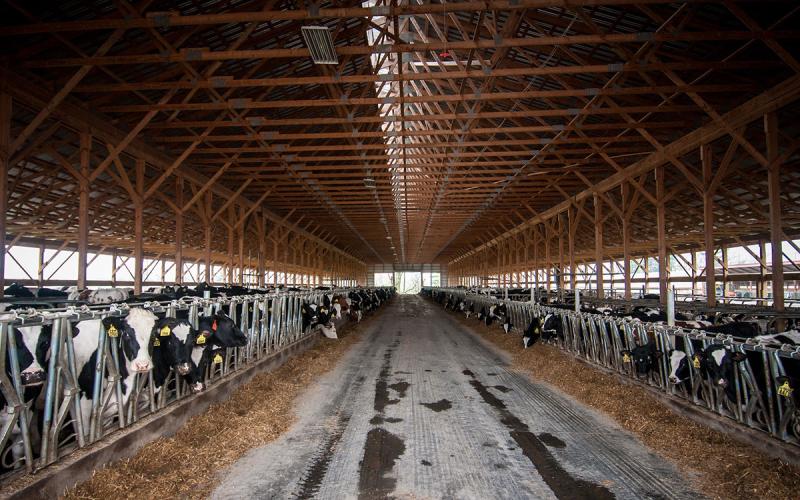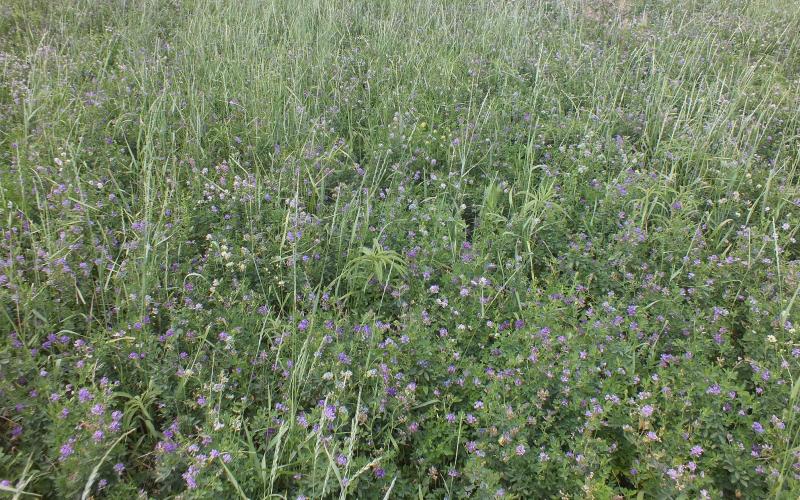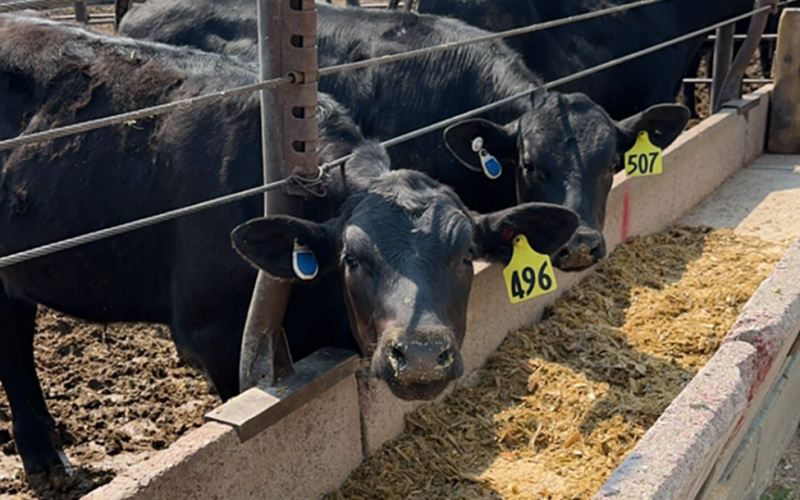Written by Patricia Villamediana, former SDSU Extension Dairy Field Specialist.
After calving, the reproductive tract of the cow takes 30 to 40 days to undergo a proper involution, a reduction of the size and weight of the uterus, after normal calving. Fertility will increase until 100 days of lactation, as negative energy balance is finally resolved. Negative energy balance is a natural consequence of decreased nutrient consumption in the periparturition period with the subsequent mobilization of body reserves and loss of body condition at the onset of lactation. During this transition period, the first three weeks postpartum, 75% of diseases occur. Cows with a high milk yield are more susceptible to diseases that affect reproductive performance, related to a loss in body condition.
The decision to inseminate a cow after calving is an important factor that decides its future reproductive performance. There should be sufficient rest period for the reproductive system to return to regular cyclicity and for the animal to regain health to support the subsequent pregnancy.
One calf per year per cow is the major goal of any dairy herd. But in practice, calving intervals mostly exceed one year (Figure 1). To achieve a calving interval of 12 months, the cow should conceive within 85 days postpartum, requiring the animal to start cycling as early as 45 days, and to be bred by 60 days.
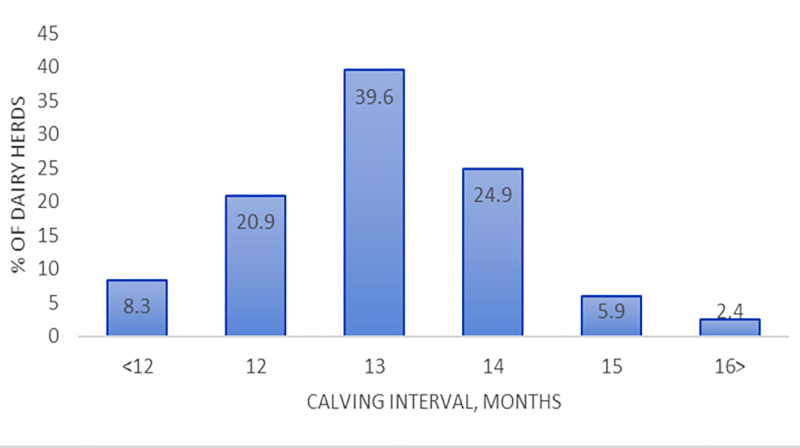
What is a Voluntary Wait Period?
The voluntary waiting period (abbreviated as VWP) is a crucial management decision that designates a target number of days postpartum, after which cows will be inseminated. A VWP of 45 to 60 days postpartum is recommended. This period allows for complete uterine involution and resumption of normal ovarian cyclicity. The first artificial insemination service (abbreviated as AI) postpartum at 6 to 8 weeks after the clinical resolution of any disease is highly recommended for the establishment and maintenance of pregnancy.
The optimal VWP differs between cows. A Netherlands dairy farm study demonstrated that the largest proportion of the cows (37%) had an optimal VWP of 6 weeks, and 63% of the cows had an optimal VWP of less than 8 weeks (Figure 2). A lower number of cows reached the optimum when the VWP was extended further from 6 weeks. For approximately 10% of the cows, a VWP larger than 9 weeks was optimal. Extending the VWP past 6 weeks starts to incur in economic costs, as demonstrated in Figure 2 by the line with open circle on the right Y-axis. In the ongoing survey of Reproductive Management of South Dakota Dairy Farms (SDSU Dairy Extension), the VWP ranges from 50 to 60 days in milk (abbreviated as DIM).
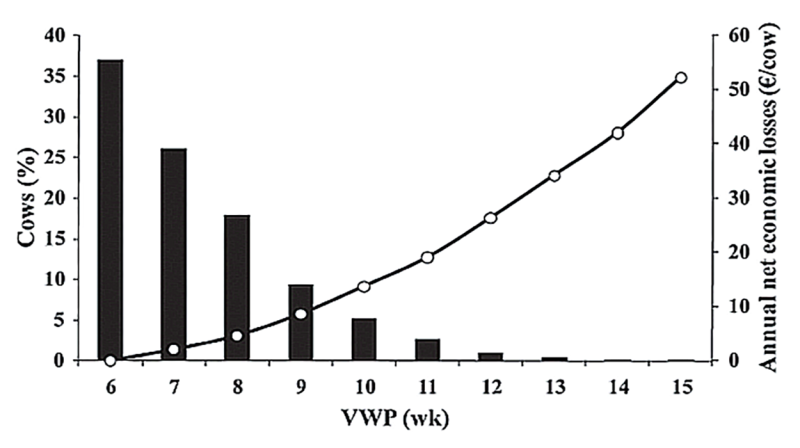
Setting a Voluntary Wait Period
One factor in setting a VWP for lactating cows is that the conception rate is expected to increase as days postpartum increase, and the lactation curve slopes down from the peak. Delaying the first service beyond the negative energy balance period improves reproductive performance by avoiding insemination during that period (optimal body condition score at the time of insemination is strongly associated with a high probability of pregnancy). Longer VWP gives more time to resume ovarian cyclicity. More estrous cycles before the first service is linked to fewer days to first service and greater pregnancies per AI.
Extending the VWP from 50 or 60 DIM to 88 DIM can increase first-service pregnancy per insemination, but delay the overall time to pregnancy. The greatest positive effect of extending the VWP on pregnancy per AI (abbreviated as P/AI) at first service may be observed in primiparous cows. Delaying the first service may result in greater profit for primiparous but not for multiparous cows.
On the other hand, reducing the VWP is associated with a lowering calving interval, logically. As it is said before, a common value for the VWP among dairy farms is 60 days, but if cows are healthy and gaining weight, it can be moved to 50 days, giving more time to get a cow bred. It is reported that a one-day reduction in days to first service decreased calving interval by 0.86 days.
Relation to Heat Detection Rate
The VWP is related to heat detection rate (the number of cows that have been detected in heat and bred versus the number that are eligible to be bred within a 21-day period) and conception rate (abbreviated as CR), which can be found by taking the percentage of cows pregnant and dividing it by the number of cows inseminated during a 21-day period, and each parameter affects the others. For example, to maintain a 12.5-month calving interval for 90% of the cows when the conception rate is 40%, and the heat detection rate is 70%, the voluntary wait period must be set at 40 days. Using the same conception rate, but a 50% heat detection rate, the VWP would have to be 18 days, a non-realistic goal. That means that heat detection needs to be improved to achieve the goal of a 12.5-month calving interval.
|
|
|
||
|---|---|---|---|
|
|
|
|
|
|
|
|
||
|
|
|
|
|
|
|
|
|
|
|
|
|
|
|
Heat Detection Rate Equation
Abbreviations
- SPC: Service Per Conception
- DO: Days Open
- VWP: Voluntary Wait Period (Based on what you specified or what you are actually doing based on the average days to first service or breeding)
- DFS: Days to First Service
Formula
- SPC × 21 ÷ (DO - VWP or DFS) + 21
The results of the heat detection rate calculations will tell how many potential breedings are actually seen and serviced. Heat detection rates move in between 30% to 75%. A reasonable goal is to detect at least 65 to 70% of the cows in heat. The goal for the conception rate is to maintain at least a 50% (2.0 Service Per Conception, abbreviated as SPC; CR = 1 ÷ SPC).
In Summary
The VWP may be flexible within a farm. Cows observed in estrus a few days before a fixed VWP might be inseminated before the target date. Also, a variable VWP may be longer by choice for high producers or primiparous cows.
It is reported that the effect of manipulating the duration of the VWP on herd performance and economics is not easy to see, because it is affected by relationships between the reproductive performance, the culling rate, milk yield and milk composition, and the economic conditions of the farm. No matter what, remember that this value influences the math and interpretation of many reproductive parameters on your dairy farm, but most important, is to keep in mind that you can fine-tune the timing of the first insemination to optimize your farm’s profit.
Resource List
- Van Knegsel A., Burgers, E., Ma, J., Gelink, R., and Kok, A. 2022. Extending lactation length: consequences for cow, calf and farmer. J. Animal Sci. 100, 1-10.
- Inchaisri, C., Jorritsma, R., Vos, P., van der Weijden, G. and Hogeveen, H. 2011. Analysis of the economically optimal voluntary waiting period for first insemination. J. Dairy Sci. 94: 3811-3823.
